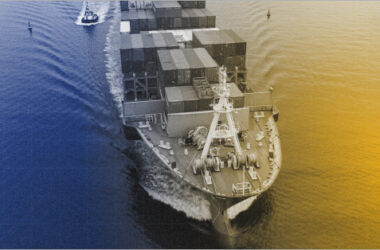To companies involved in maritime commerce and logistics, paperwork is the backbone that keeps the shipments sailing. Of all such documents, not many are as vital as the Bill of Lading (BoL). But, what is this document and what is so significant about it in the context of global trade?
A Bill of Lading, simply put, is a legal document of shipment. It includes the nature of goods being shipped, the amount of goods shipped and the destination of the goods. In addition, it serves as a proof of ownership, responsibility, and safe transportation. In this blog, we will have a closer look at the definition of the Bill of Lading, its types, advantages and the important components.
Bill of Lading : The Basic Concept
A Bill of Lading (BoL or BL) is a legal document issued by a transport company on behalf of the shipper. It serves as a contract and receipt between the carrier and shipper certifying that the goods are loaded and are in transit.
This document protects the rights of the two parties as it specifies the responsibilities, ownership, and liability in the process of shipment. It is especially critical in global commerce, where the commodities can be transferred several times before their destination. Basically, it is the legal backbone of international logistics and it ensures that every shipment is transported with clearly defined terms.
Different Types of Bill of Lading
Not every Bill of Lading is similar in the logistics world. Each has a specific purpose, depending on the mode of transport and trade requirement. The most common varieties of Bills of Lading are listed below:
- Inland Bill of Lading
This type is applied in overland transportation, which involves the transportation of goods between the shipper and the port for international shipping.
- Ocean Bill of Lading
Issued for sea transport, it acts as the carrier’s receipt to the shipper, acknowledging that goods have been loaded for overseas shipment.
It is issued in sea transport, and serves as the receipt from the carrier to the shipper. It acknowledges that goods have been loaded to be shipped overseas.
- Negotiable Bill of Lading
A negotiable BoL permits the ownership to be transferred to a different party by means of endorsement. It is commonly applied in international trade and financing to carry out credit transactions.
- Claused Bill of Lading
This form refers to any damage or difference noted in the goods or packaging during the process of loading. These comments can influence whether the buyer will accept delivery or not.
- Clean Bill of Lading
A clean BoL confirms that goods were loaded in excellent condition and no damage or irregularities were observed. It is often a requirement under letters of credit for payment release.
- Uniform Bill of Lading
This is a standardised contract that defines the duty of the carrier and exporter regarding the shipped goods.
- Through Bill of Lading
Applied when the shipment is by more than one carrier or through multiple modes of transport (such as sea, rail, or truck). This BoL covers the entire route under a single contract.
Components of a Bill of Lading
A Bill of Lading is a detailed record containing several vital elements that define every aspect of a shipment. Let’s explore these components:
Shipper Details
This section lists the sender’s information—including name, address, contact number, and email—identifying the origin of the shipment.
Consignee Details
The consignee section identifies the recipient or buyer of the goods, along with their address, destination, and contact details.
Carrier Information
This part includes details of the transport company handling the shipment, such as its name, code, or tracking reference number.
Description of Goods
Here, the goods are described in detail—including their quantity, weight, dimensions, packaging type, and any unique identification numbers.
Marks and Numbers
These are unique identifiers or symbols on containers or packages used for easy tracking and verification.
Freight Charges
Specifies the agreed shipping costs and who is responsible for paying them—the shipper or consignee.
Payment Terms
Outlines whether the shipment is freight prepaid or collect, defining when and how payment must be made.
Date of Shipment
Indicates the exact loading date of goods onto the carrier, helping track transit duration and delivery timelines.
Place of Receipt and Delivery
Lists the origin point and destination of the shipment, marking where goods were accepted and where they will be delivered.
Bill of Lading Number
Each BoL carries a unique reference number used to trace and manage the shipment throughout its journey.
Terms and Conditions
This section defines the legal framework—including carrier liability, limitations, and responsibilities during the transport.
Signatures
The document concludes with the signatures of the shipper, carrier, and sometimes the consignee, making it legally valid and enforceable.
Advantages of Bill of Lading
The Bill of Lading is far more than a routine piece of paperwork—it’s the backbone of trade logistics. Its key benefits include:
Proof of Contract
The BoL acts as legal evidence of the agreement between the shipper and carrier, outlining all conditions governing the shipment.
Receipt for Goods
It serves as a receipt confirming that goods were received by the carrier in the stated condition, reducing the chances of dispute or confusion.
Smooth Trade Operations
A properly managed BoL helps simplify customs clearance, prevent delays, and ensure a seamless flow of cargo operations.
Legal Compliance
It helps maintain compliance with both national and international shipping laws, protecting all parties from legal complications.
Who Issues Online Bill of Lading?
The Bill of Lading is traditionally issued by the carrier or the shipper. Nevertheless, in certain instances, it can be prepared by a third-party logistics provider on behalf of the shipper. Both the shipper and carrier are supposed to sign the document to validate the contract, before the shipment commences.
How to Create a Bill of Lading?
The process of preparing a BoL consists of a set of sequential steps- to guarantee the accuracy and legality:
Step 1: Collect Information
Collect all the information needed about the shipment, including the information about shipper and consignee, product description, weight, quantity and destination.
Step 2: Fill the BoL Form
Enter the data thus collected into the Bill of Lading form- including the reference number, terms of freight and any special handling instructions.
Step 3: Review and Sign
Review the form to ensure that it is accurate. After verification, the shipper and carrier are required to sign the document.
Step 4: Distribute Copies
Upon signing, hand over copies of the BoL to all the parties concerned- the shipper, carrier and consignee—for tracking and legal purposes.
Electronic Bill of Lading (e-BoL)
As the world is turning digital and the global trade scenario is changing fast, e-Bill of Lading (e-BoL) is gaining popularity. It is similar to the conventional one- except that it substitutes paper-based arrangement with a safe web-based record.
An e-BoL is quicker to access, reduces paperwork, and prevents loss of documents. It is cloud based; this means that authorised users can access and manage it from anywhere. Extra encryption and authentication help increase the level of security, thus preventing tampering or unauthorized access.
Best Practices for Managing Bills of Lading
Effective BoL management ensures transparency and compliance. Here are some proven practices:
Check All Shipment Details
Always verify shipment data—including goods description, quantities, and consignee details—to prevent costly mistakes.
Establish an Audit Trail
Maintain a record of every change or approval linked to the BoL for traceability and accountability.
Train Relevant Staff
Ensure all personnel involved in documentation and logistics are well-trained in BoL preparation and handling.
Maintain Records
Keep organised archives of all issued Bills of Lading for future reference, audits, and compliance checks.
Dual Authorisation
Use a dual-approval system so that two authorised individuals review each BoL before it’s finalised—minimising risks of error or fraud.
The Bottoline:
A Bill of Lading is more than a shipping form—it’s a crucial legal instrument that powers the world of logistics. From ensuring customs clearance to enabling insurance claims and compliance, it remains an irreplaceable part of modern trade.
Whether in digital or paper form, a well-prepared BoL helps streamline shipping operations and ensures transparency. To further safeguard shipments, businesses should consider investing in Marine Insurance.
BimaKavach offers customisable Marine Insurance policies designed to protect your cargo and vessel against unforeseen risks during transit. Here, we understand the complexities of global trade. Whether you ship occasionally or frequently, our customised solutions can provide the security, reliability, and peace of mind your business needs to operate confidently across international waters.
Talk to our seasoned experts today and choose the best Marine Insurance Policy to secure your shipments.







